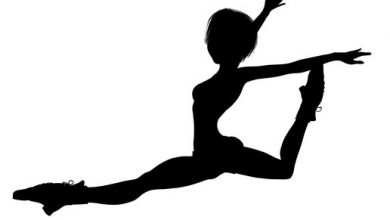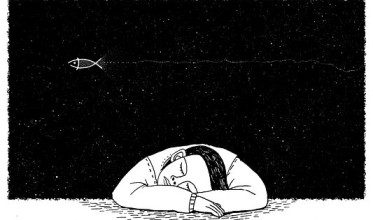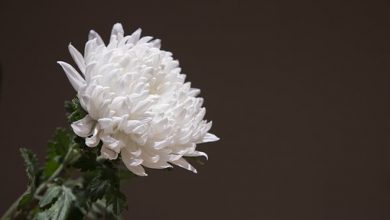
Bayonet Charge by Ted Hughes is a war poem written in third-person narrative, divided into three stanzas. The main themes of this poem are war, dislocation and confusion, fear and patriotism. Hughes employs alliterations, similes, metaphors, symbolism and imagery to paint a vivid picture for his readers. He also uses enjambment, caesura and a rhetorical question in the poem. The rhetoric especially aids in the exposition of an overarching concept in the poem- destiny and free will. Hughes served in the First World War, narrowly escaped a bullet that could have caused his death, and was only one of the 17 of his regiment to make it out alive. This poem is written from personal experience, channelling the chaos, terror and cruelty of war, and the inexplicable fear that comes with it. He wrote Bayonet Charge in memory of his father, uncle and a close friend, all of whom served in the First World War as well.
Bayonet Charge | Summary
The poem opens with a soldier in the middle of a battle, who suddenly realises that he is running on uneven terrain, towards a green hedge that is alight with rifle fire. He is drenched in sweat, decked in his khaki uniform, and he can hear the sound of bullets pierce the air as he pulls his rifle along. His eyes had once burned with patriotic tears, but now all he can feel is the heat of sweat on his chest.
In his confusion, he almost stops running. He wonders why he is fighting the battle- how he became a hand on the clock of the universe and the government, acting according to their desires. He runs as though he is in complete darkness, trying to listen to the footsteps to understand the reason why he continues running. His foot seems to be suspended in the air mid-step as he urges himself forward.
A shot slashes through the air and buries itself in the ground, causing a yellow hare to jump out of its hiding place. It “rolls like a flame”, clearly in shock from the heat and the noise as it crawls into a threshing. The soldier rushes past with his rifle- a bayonet- pointed towards the green hedge. There are reasons he is on the battlefield- “king, honour and dignity”- but they all seem trivial in the middle of a war, and he cannot afford to spend time thinking about them. His only goal is to escape from “blue crackling air” filled with smoke. He knows his life is in danger, feeling the terror of the gunshots all around him. But he also knows that with his bayonet in hand and fighting on the battlefield, he is just as much a danger to his enemies’ lives, as well.
Bayonet Charge | Analysis
Bayonet Charge by Ted Hughes is a poem written in third-person narrative, divided into three stanzas. This poem contains a split of sentences between the stanzas – aptly complementing the uncertainty of the battlefield and the unevenness of the terrain on which the soldier is fighting a war that, perhaps, is really not his to fight. It is these elements that add to the suspense and building emotion of the piece. The bayonet is the soldier’s weapon- it is a sword-like sheath placed over a rifle. This way, the rifle itself can shoot bullets, while the bayonet placed on it can pierce the enemy in direct combat. Because of this, it is dangerous to get too close, just as much as it is to stray to a distance.
Bayonet Charge | Analysis, Lines 1-2
“Suddenly he awoke and was running – raw
In raw-seamed hot khaki, his sweat heavy”
The poem, focusing on a single soldier in the midst of battle, begins with a rattle to his consciousness. His sudden awakening is a metaphorical representation of the way people realise the weight of their actions when they are surrounded by chaos. Here, the soldier’s position in the middle of the battlefield dawns upon him a sense of self-awareness- he has woken from a daydream and is thrust into the cruel reality. The use of the word “Suddenly” to open the poem conveys a sense of alarm and places the reader right in the middle of the action.
One may even suggest that this war poem opens in medias res, (Latin: “in the midst of things”) – a technique with which epics and other narratives often begin, by plunging into a crucial situation that is part of a related chain of events. Only, in this case, it isn’t a grand epic but a hopeless subplot of a larger metanarrative, in which a hapless soldier is made to fight a battle that is not his in the first place. “Running” is another word used in the opening line that is pregnant with meaning – this sense of movement not only stands for the continuous, even thoughtless action in the midst of the battle but also conveys the situation of the soldier who is running not only from an imminent threat but from the very battle that seeks to annihilate him for causes not remotely related to him. In a sense, this soldier isn’t fighting a battle but running away from it – a word that is repeated multiple times in this poem.
The word ‘raw’ is repeated for emphasis- it refers to both the physical soreness from the heat and fatigue of battle, as well as the soldier’s emotions. This indicates the themes of dislocation and confusion. The description of the uniform makes it obvious that the main character is indeed a soldier, and the heaviness of sweat is a bodily result of his effort and exhaustion. There is no punctuation after the first line- it flows directly into the second – demonstrating the use of enjambment by Hughes. The poem, like the soldier, does not have the luxury of a pause. This is one of the examples in the poem in which Hughes beautifully interweaves the content of the poem with its form.
Bayonet Charge | Analysis, Lines 3-5
“Stumbling across a field of clods towards a green hedge
That dazzled with rifle fire, hearing
Bullets smacking the belly out of the air –”
Here, the green hedge symbolises survival and escape, which is slightly ironic because the hedge is on fire. This symbolism comes from the fact that the soldier is making his way through the fields towards the hedge, similar to how he is fighting his way through the war to make it out alive. The fields of clods represent the combat of the battle, while the hedge represents his final destination. Reaching the hedge is equivalent to surviving and coming out on the other side. The description of bullets flying through the air is to highlight the intensity of the battle and help the readers feel the terror and unpredictability of war. The line “smacking the belly out of the air” emphasises the sound created, like hollow thumps piercing through the air. We once again see the use of enjambment between lines three and four.
Bayonet Charge | Analysis, Lines 6-8
“He lugged a rifle numb as a smashed arm;
The patriotic tear that had brimmed in his eye
Sweating like molten iron from the centre of his chest”
For the first time, the soldier’s weapon- a rifle- is mentioned. Hughes uses a simile in line 6, comparing the rifle to a smashed arm due to its weight and lifelessness. The heaviness of the weapon suggests more than just a physical weight- it symbolises the emotional pain and burden the soldier carries with him. The ‘patriotic tear’ highlights the way the soldier joined the war in readiness to fight for his nation- here, we first see the themes of war and patriotism. The use of past perfect tense indicates that the pride has since disappeared when the reality of war sunk in. Now he only feels heat and heaviness in his chest as he realises his life could end in this war ‘molten iron is used as a comparison. Enjambment is used between lines 7 and 8.
Bayonet Charge | Analysis, Lines 9-12
“In bewilderment then he almost stopped –
In what cold clockwork of the stars and the nations
Was he the hand pointing that second? He was running
Like a man who has jumped up in the dark and runs”
The next lines bring in themes of confusion, as well as the greater element of destiny and free will. The soldier’s puzzlement leads to a second enlightening moment- the first being the awareness of his position in battle, and the second being his wonderment at why he is in battle. The cold clockwork is a metaphor for destiny. ‘Cold’ is used to describe the ruthless and emotionless nature of war, while ‘clockwork’ refers to both times, as well as the unstoppable and unchangeable ways of the universe. Every second of the soldier’s life has led him to that moment in the warzone. The mention of ‘nations’ represents that he is fighting for his country. The use of rhetoric here establishes the helplessness of the situation- war is extremely unpredictable, and the soldier does not know what his fate will be. He is asking a question for which there is no answer- the nonexistence of a reason rendered him powerless, for in the end, his future seems to be up to destiny. He is a pawn in the grand scheme of nature, a ‘hand on the clock’. He runs as though he is in the dark, despite being able to see what is around him, which suggests the helter-skelter nature and chaos, as well as how blindly he takes his steps. There is no time for calculation and technicality in this life or death situation- his main aim is to get to the green hedge in any way possible.
Bayonet Charge | Analysis, Lines 13-15
“Listening between his footfalls for the reason
Of his still running, and his foot hung like
Statuary in mid-stride. Then the shot-slashed furrows”
The soldier is unable to find a reason for his running, an answer to his question. His foot hanging mid-stride just one line after he is listening between his footfalls is an interesting contrast. It shows the suddenness of realisations, and how it can render one motionless. The suspension of the foot in mid-stride is a physical reaction to represent his mental state. We once more see enjambments in all three of these lines.
Bayonet Charge | Analysis, Lines 16-18
“Threw up a yellow hare that rolled like a flame
And crawled in a threshing circle, its mouth wide
Open silent, its eyes standing out.”
This is the first and only character mentioned in this poem besides the soldier himself and is also the only creature the soldier notices. This is important to note, as in a war there are presumably many others sufferers, besides the soldier in the poem – much on this later. The soldier does not pay any attention to them or their expressions, yet he only observes the hare. The condition of the hare brings forth the theme of fear and suffering. The hare is a collateral damage of the battle – an irrelevant victim of a war that is indifferent to its suffering in the first place. The hare is caught at the crosshairs of a battle in which it finds itself and is desperate to run away from it, albeit being hopelessly unsuccessful. In some ways, it represents the soldier in this poem. The hare does not matter. The soldier does not matter. It is just a “hare” and he is just a “soldier”. Also, consider the telling namelessness of the soldier throughout the poem: surely, pawns do not have the luxury of names and must make do with the nameplate of anonymity.
The hare shows a direct reaction to the terror of war, the bombs blasting, and the bullets whizzing by. Hughes uses a simile to compare the hare’s rolling to a flame. The description of its widened eyes and open mouth evokes fear and anxiousness within the readers as well. While with the soldier, we read about his fearful thoughts, with the hare we see a facial expression and a bodily reaction. The mouth ‘wide open silent’ indicates that the hare was too shocked to even make a noise, but it also represents the way that nobody has a say in their fate. No matter how much one speaks or screams, it cannot get them out of the war they are bound to fight in battle and accept their destiny. The hare’s fate could possibly foreshadow the fate of the soldier that awaits him, a fate that he is desperately trying to run away from. As Jean La Fontaine once put it: A person often meets his destiny on the road he took to avoid it.
The focus on the hare, a non-human entity, as a suffering subject sets this poem apart form other such anti-war poems. By shifting the focus from an anthropocentric notion war and directing the reader’s attention towards a fellow creature that is suffering from man’s actions, Bayonet Charge also becomes an unique anti-war poem that is empathetic to animal experiences. Hughes, widely known for his animal poems, has made prolific use of animal imageries in his works. By juxtaposing the hare and the soldier as fellow sufferers of the same battle, Bayonet Charge bridges the boundaries between the Self and the Other and explores the idea of suffering that extends beyond the human subject.
Bayonet Charge | Analysis, Lines 19-21
“He plunged past with his bayonet toward the green hedge,
King, honour, human dignity, etcetera
Dropped like luxuries in a yelling alarm”
In the final length of the soldier’s dash to the green hedge, his final destination, he thinks of words that may have held more meaning to him when he first entered the war. The importance of fighting for one’s country, the honour of being a soldier, the dignity the name carries- all of these are things he may have been proud of before the war, and these thoughts may have given him strength at the beginning. Now, with the knowledge that he could die at any moment, and the realisation that he does not know the reason fate has placed him on the battlefield, those words are meaningless. Notice the use of the word “etcetera” to highlight the superfluous and expendable nature of such seemingly grand ideas and ideals. The ‘dropping of luxuries’ indicates that the soldier has left the comfort and happiness of his home life to fight on the cold and rough battlefield. He dropped all his luxuries, and now he drops the importance of such words in the same way- it is trivial in the face of death.
Bayonet Charge | Analysis, Lines 22-23
“To get out of that blue crackling air
His terror’s touchy dynamite.”
His sole aim is to escape from the ‘blue crackling air’. Here, Hughes employs imagery to describe the setting. The blue indicates the smoke, while the crackling refers to the sound made by rifles and bullets. The soldier wants to reach the hedge and make it out alive. The concluding line about “his terror’s touchy dynamite” could have multiple meanings. One is that it refers to his own fear and the awareness that his own life could disappear at any moment. The other is that he is capable of taking another’s life- here, ‘touchy’ could refer to the Bayonet. A bayonet is a weapon that injures through direct contact. Unlike a rifle, which is equipment to shoot the bullet, the bayonet itself is what is used to injure another- by touching. The nameless soldier is the bayonet he holds and he seeks to run away from the bayonet he is handed. As he is charging with the bayonet, the bayonet is charging towards him. The concluding line of the poem evokes dread in the readers’ as they realise the bleakness of the situation. For, in the end, the soldier will either lose his life or his health, otherwise he will be the one taking another’s life. Either way, it is a terrible and helpless outcome, and such a closing line truly encapsulates the theme of war.
Ted Hughes | About the Poet
Ted Hughes was an English poet born in 1930 He is well-known for clever delivery of harsh and realistic depictions of life in his work, with less sentimentality. He had the ability to write ruthlessness and violence with an underlying tone of beauty.
He served in the First World War, fighting in Ypres, and narrowly escaped death. Hughes was appointed as a member of the Order of Merit by Queen Elizabeth II
Hughes passed away in 1998.





